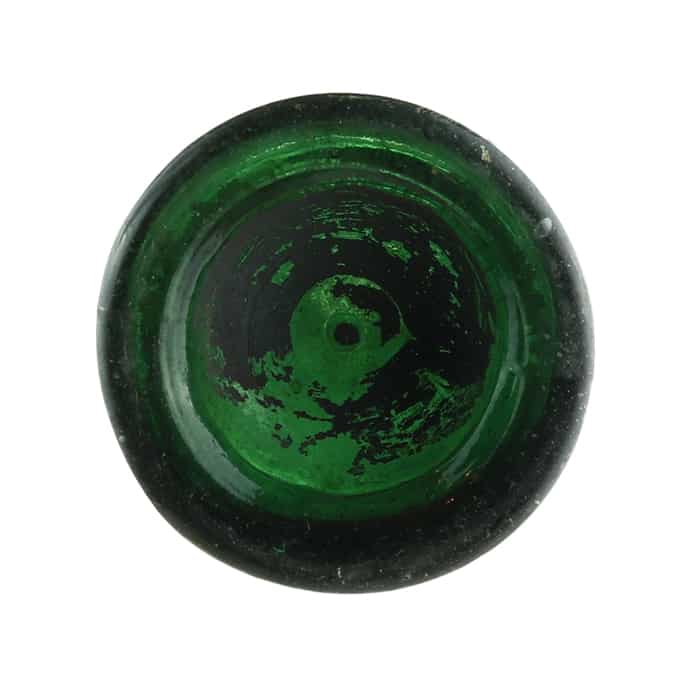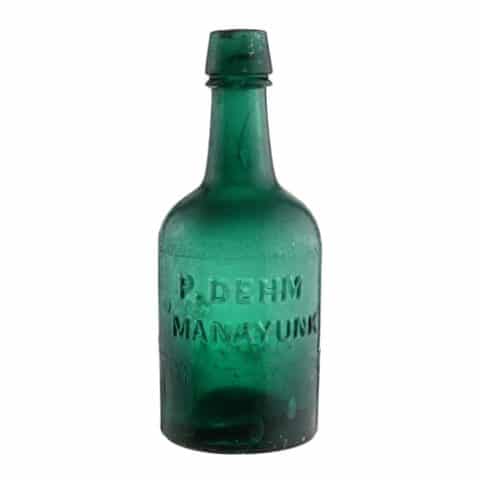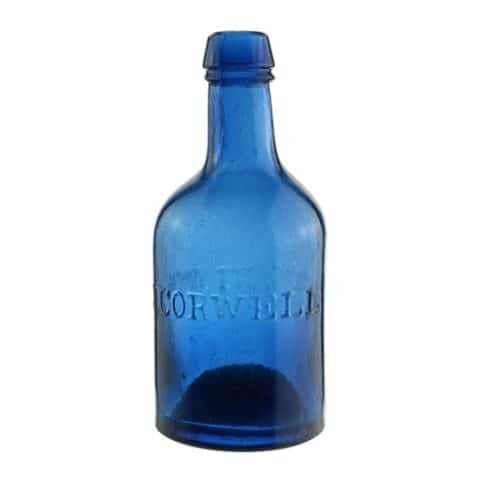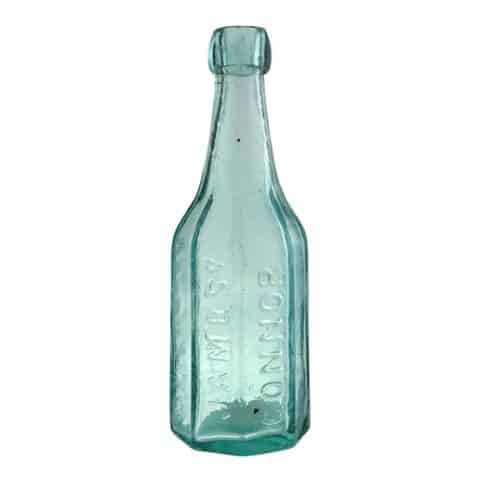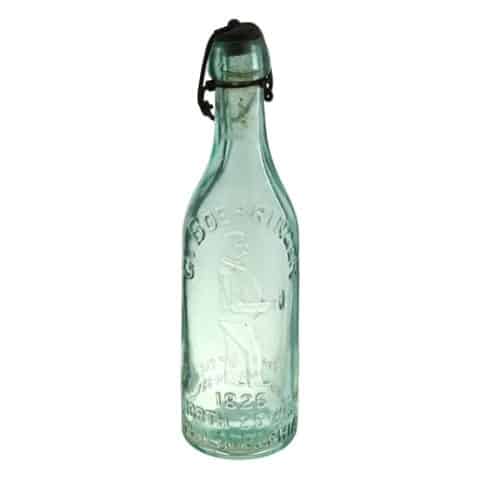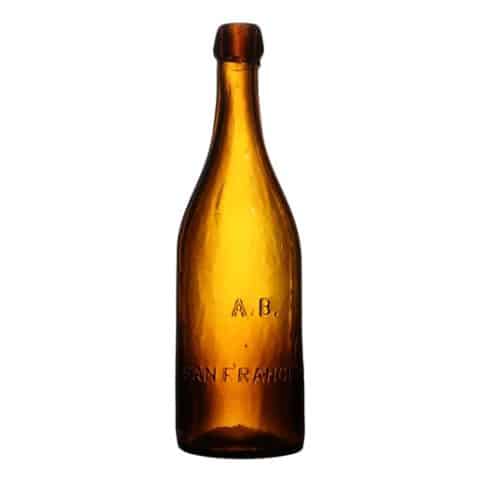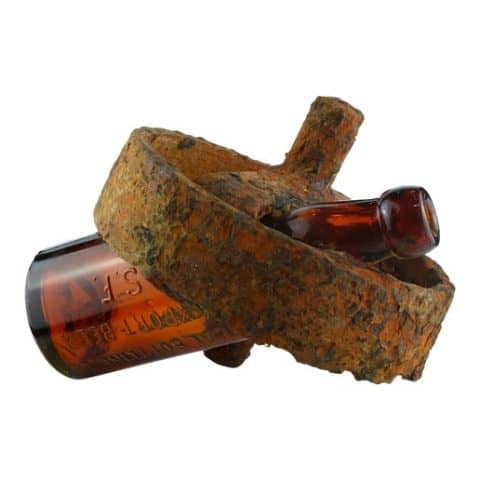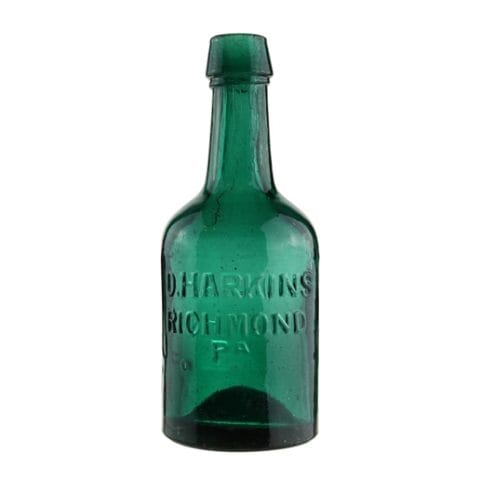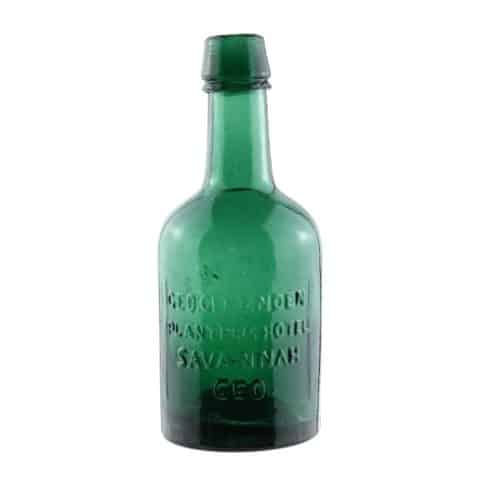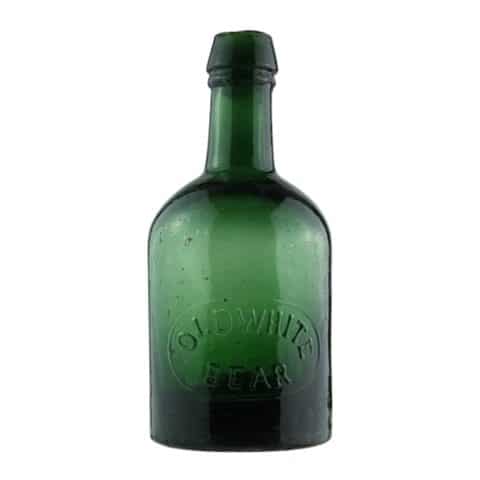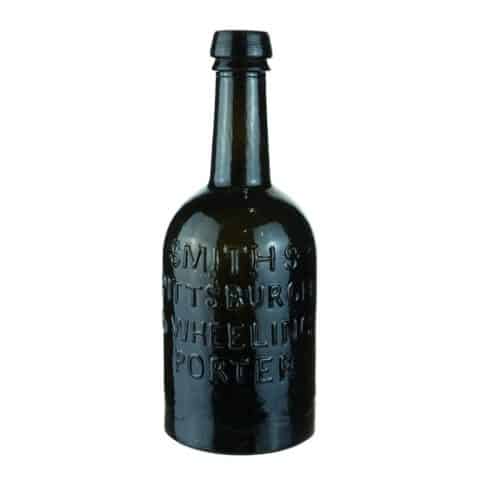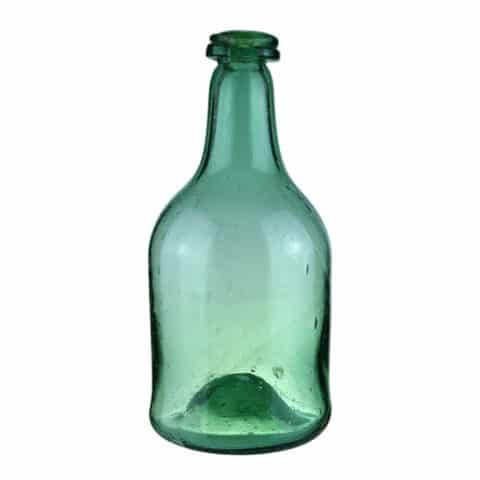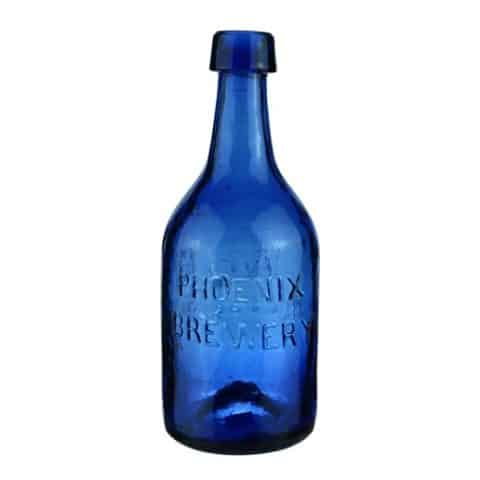Margt McAvoy Phil. Dyottville Glass Works Philada
Margt McAvoy
Phil.
Dyottville Glass Works
Philada
H. B. & J. M. Benners, Dyottville Glass Works, Kensington, Philadelphia, Pennsylvania
Green Porter
Provenance: Tod von Mechow Collection
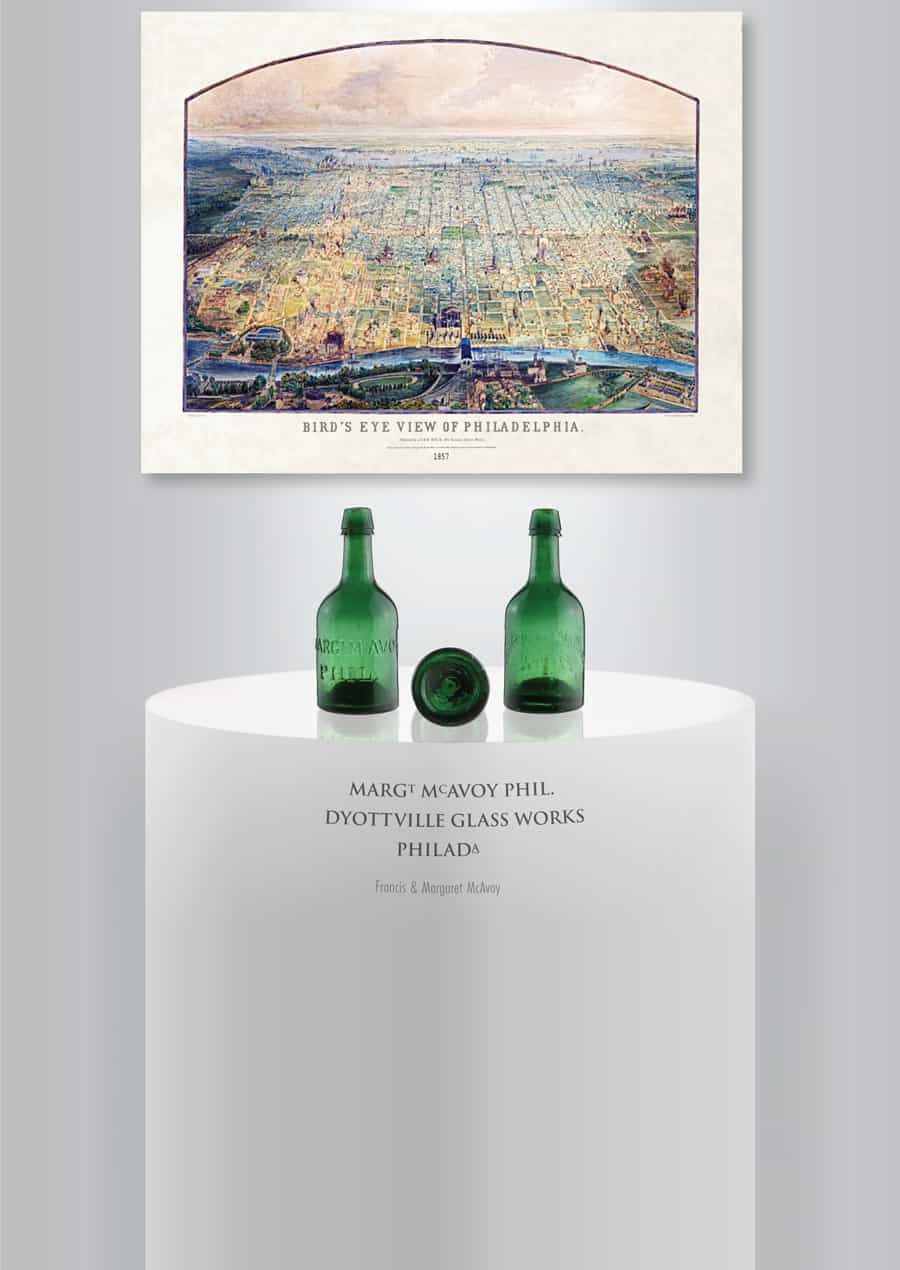
This extremely rare container made at the Dyottville Glass Works in Kensington is considered the oldest glass beer bottle embossed with a woman’s name. Margaret and her husband, Francis McAvoy, lived and worked in the old Moyamensing area of Philadelphia in the mid-1800s.
Moyamensing was established as Moyamensing Township during British colonial rule. The township was one of the earliest created after the settlement of Pennsylvania and became part of Philadelphia in 1854.
Anthony Palmer founded Kensington in the early 1730s and is traditionally known as one of the working-class centers of Philadelphia. Initially, business focused on and around the nearby waterfront and the activities of fishermen and ship and boatbuilders. In the early 19th century, Kensington transitioned to iron and steel manufacturing and became home to various factories, glassmaking, pottery, and machine works.

Our 7 inches by 3-inch diameter green porter-style bottle is embossed ‘MARGT McAVOY’ in a sans serif typestyle and ‘PHIL.’ in a serif typestyle in two centered horizontal lines set within a plate on the face of the bottle. The “T” in “MARGT” and the “C” in “McAvoy” is smaller and raised. The reverse of the bottle is embossed ‘DYOTTVILLE GLASS WORKS’ in a convex arch using delicate small serif lettering over ‘PHILADA’ set in sans serif copy. The last “A” in “PHILADA” is smaller, raised, and underlined. The hand-blown bottle has a double tapered collar, improved iron pontil, and would have used a cork stopper. The bottle dates from 1856 to 1857, when brothers H. B. & J. M. Benners were the proprietors of Dyottville Glass Works.
Francis McAvoy was born around 1801 in Belfast, Northern Ireland. He married Margaret Brownlee in Ireland, where they left, with their son Robert, for America on November 1, 1828. They arrived in New York, New York, on November 28 aboard the ship Wilson. An 1850 United States Federal Census Report lists their children as Mary J. McAvoy, John McAvoy, Samuel McAvoy, Margaret McAvoy, Francis McAvoy, Charlotte McAvoy, and William McAvoy. Robert, the oldest son, was not listed.
Philadelphia city directories note that Francis McAvoy operated at a tavern from 1851 to 1855 and was a bottler from 1844 to 1850 located on the Northwest corner of 6th and Fitzwater Street (744 S 6th). Francis would become a prominent politician in the district of Moyamensing. McAvoy was also an officer in the militia under General Cadwalader and took part in the suppression of the Nativist Riots of 1844. He was also one of the forty-niners in California. Francis McAvoy died in 1855, and Margaret took over. She appears to have sold the business in 1860 based on directory listings. She died on February 23, 1894. Her obituary said she was the “oldest resident of Moyamensing.”
Dyottville Glass Works in the Kensington area just north of the City of Philadelphia on the Delaware River was founded by Thomas W. Dyott. Born in England in 1777, Dyott began working as an English pharmacist apprentice. He came to Philadelphia sometime around 1805, making and selling boot black. From these somewhat humble beginnings, Dyott built a large commercial sales force and set up his own practice where he gave free advice but recommended his own products. His business spread until he sold medical concoctions at least as far south as South Carolina and west to St. Louis. Dyott became concerned about finding enough bottles and vials to support his business, so he soon got involved in the glass trade. With various iterations and names of glassmaking operations, Dyott, in 1824, published an ad for wares from the Philadelphia and Kensington Glass Factories.
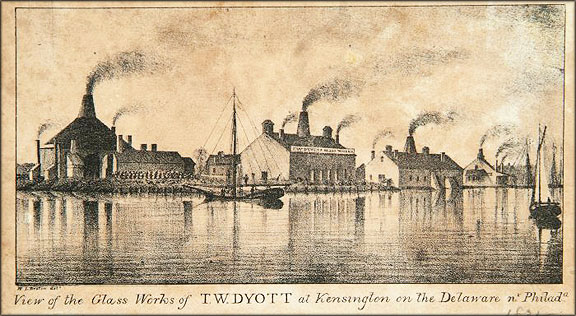
By 1834, there were four large factories or furnaces, each with ten melting pots and constantly employing more than 300 men and boys, who produced 10,000 pounds of glass daily. The plants produced wares like vials, bottles, demijohns, and window glass.
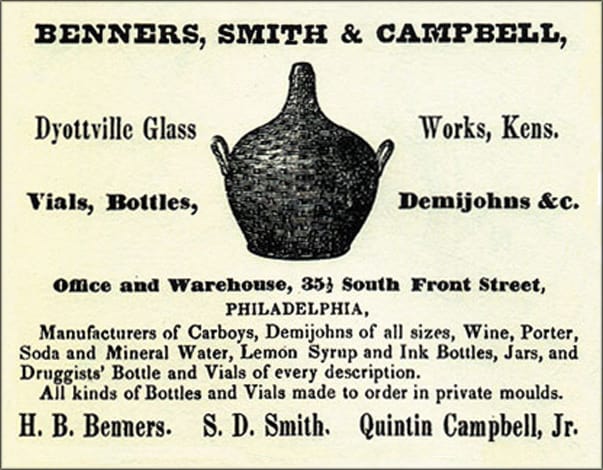
In 1842, Henry Seybert acquired one (or perhaps two) of the old Dyott factories, which had lain dormant for several years, and made mineral water bottles. He presumably used the term Dyottville Glass Works for his operation. His successors indeed used the name. In 1844, Seybert sold out to Henry B. Benners, S. Decatur Smith, and Quinten Campbell, Jr. under the banner Benners, Smith & Campbell, Dyottville Glass Works, Kensington. Their offices and warehouse were located at 35 South Front Street in Philadelphia. They were manufacturing “Carboys, Demijohns of all sizes, Wine, Porter, Soda and Mineral Water, Lemon Syrup and Ink Bottles, Jars, and Druggists’ Bottles and Vials of every description.” The bottles and jars were also made to order in private molds. Henry B. Benners was perhaps the youngest of the partners, having worked in the Seybert operation as a boy.
In 1852, the firm was dissolved and succeeded by brothers Henry B. and James M. Benners as H. B. & J. M. Benners. Advertisements in the July 1855 Public Ledger newspaper in Philadelphia stated “Bottles! Bottles!! Bottles!!! Plain Mineral Water Bottles, Pint and Quart Porter Bottles, Brown Stout Bottles, Wine Bottles, Constantly on hand and for sale by H. B. & J. M. Benners, Dyottville Glassworks, No. 27 South Front street.” Various brothers joined or left the partnership for the next decade or more until Henry Benners became the sole proprietor.
Primary Image: “Margt McAvoy Phil. Dyottville Glass Works Philada” bottle imaged on location by Alan DeMaison, FOHBC Virtual Museum Midwest Studio.
Support: Reference to Soda & Beer Bottles of North America, Tod von Mechow
Support: Reference to Dyottville Glass Works by Bill Lockhart, Pete Schulz, Beau Schriever, Bill Lindsey, and Carol Serr.
Support Image: View of the Glass Works of T. W. Dyott – Historical Society of Pennsylvania – 1832
Support: Birds Eye View of Philadelphia illustration, circa 1857
Support: Reference to Singing Along at Dyottville Glass Works, PeachridgeGlass.com. May 2013.
Join the FOHBC: The Virtual Museum is a project of the Federation of Historical Bottle Collectors (FOHBC). To become a member.

